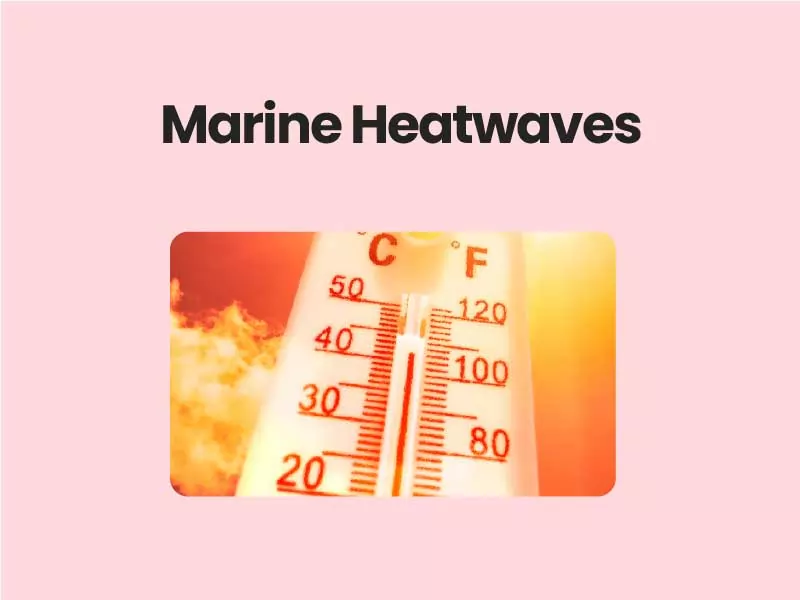Companion@360 → 7 Month programme to sharpen your writing skills → REGISTER NOW

Marine Heatwaves
Marine heatwaves are periods of extremely high temperatures in the ocean.
These events are linked to coral bleaching, seagrass destruction, and loss of kelp forests, affecting the fisheries sector adversely.
The most common drivers of marine heatwaves include ocean currents which can build up areas of warm water and air-sea heat flux, or warming through the ocean surface from the atmosphere.
The most common cause of marine heat waves are ocean currents which can build up areas of warm water and air-sea heat flux, or warming through the ocean surface from the atmosphere.
Normally, sunlight passes through the atmosphere and heats the surface of the ocean. If there are weak winds this warm water doesn’t mix with the cooler waters below.
It sits on top and continues to heat leading to marine heat waves.
According to a study, the Western Indian Ocean region experienced the largest increase in marine heatwaves at a rate of about 1.5 events per decade, followed by the north Bay of Bengal at a rate of 0.5 events per decade.
From 1982 to 2018, the Western Indian Ocean had a total of 66 events, while the Bay of Bengal had 94 events.
The marine heatwaves in the Western Indian Ocean and the Bay of Bengal increased drying conditions over the central Indian subcontinent.
Correspondingly, there is a significant increase in the rainfall over south peninsular India in response to the heatwaves in the north Bay of Bengal.
Read Also Cyclone Nivar
